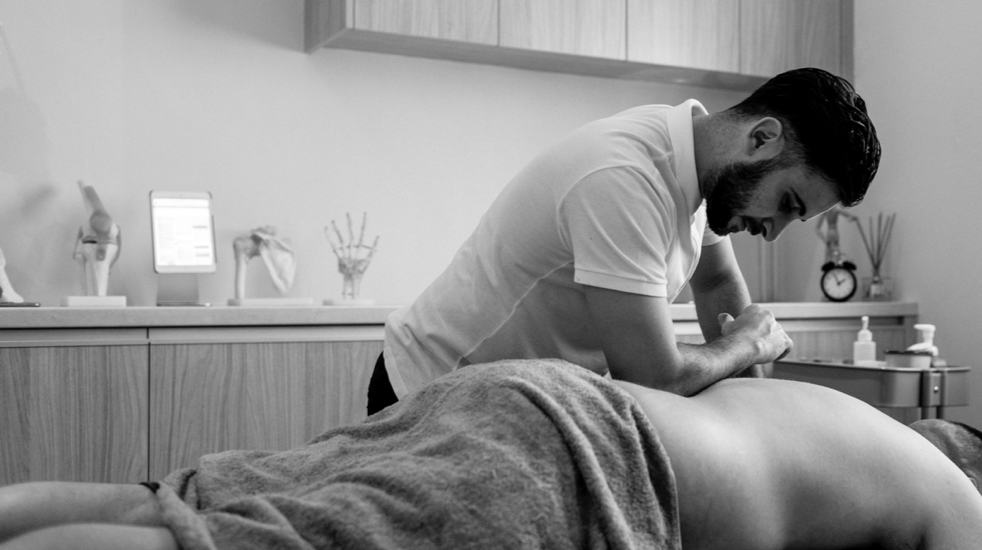How Chiropractic Treatment Can Benefit Your Posture and Mobility


Chiropractic care goes far beyond the cliché image of cracking backs. It’s a holistic, drug-free, and hands-on approach aimed at aligning the body—particularly the spine—to promote overall health. Chiropractors aim to treat the root cause of dysfunction rather than just managing symptoms by incorporating chiropractic care .
The Modern Epidemic: Poor Posture and Reduced Mobility
In today’s tech-driven society, hours hunched over laptops, phones, and steering wheels have created an epidemic of poor posture. Over time, poor posture leads to discomfort, chronic back pain, and reduced flexibility, which can be exacerbated by the inability to reduce muscle tension and a cascade of physical symptoms that make everyday activities difficult.
What Is Chiropractic Care?
Chiropractic treatment focuses on diagnosing and treating mechanical disorders of the musculoskeletal system—particularly through spinal manipulation and e spine. By addressing spinal misalignments and restoring proper alignment, chiropractors aim to enhance the function of the nervous system and improve the body’s natural healing ability.


How It Differs from Other Therapies
Unlike physiotherapy, which often focuses on rehabilitation through movement and strengthening, or massage therapy, which primarily addresses soft tissue, chiropractic treatment uses spinal adjustments and manual therapy to restore alignment and alleviate pain.
Understanding the Impact of Poor Posture on Mobility
Muscle Imbalances and Dysfunction
Poor posture causes certain muscles to become overactive and tight, while others weaken and lengthen. These musculoskeletal issues arise from imbalances that distort alignment, impairing movement efficiency and leading to chronic discomfort and compensations in the body.
Overloading the Musculoskeletal System
The longer poor posture persists, the more stress accumulates in joints and muscles, especially in the back, neck, hips, and shoulders. This can result in chronic pain, making it difficult to manage pain fatigue, and increasing the reduced risk of injury.
Reduced Range of Motion
When joints are misaligned or restricted, the body loses flexibility. Movements like bending, twisting, and reaching become stiff or even painful—affecting your ability to perform basic daily tasks.
Common Posture and Mobility Issues Chiropractors Address
- Forward Head Posture: Common in desk workers, this strain leads to neck pain and headaches.
- Rounded Shoulders: Contributes to shoulder and upper back tension.
- Pelvic Misalignment: Leads to hip, lower back, and leg pain.
- Restricted Range of Motion: Impacts the neck, shoulders, hips, and even knees.
How Chiropractic Adjustments Improve Posture
What Are Chiropractic Adjustments?
Chiropractic adjustments use gentle, controlled force to restore joint mobility, reduce pain, and correct spinal misalignments. These manual adjustments often result in immediate relief and improved range of motion.
Realigning the Spine for Optimal Posture
Spinal adjustments realign vertebrae, relieve pressure on nerves, and support healthy posture. Proper spinal alignment also allows muscles to work efficiently, reducing fatigue and preventing further strain.


Long-Term Correction, Not Just a Quick Fix
While you may feel relief after your first visit, chiropractic care focuses on long-term posture correction. Through ongoing chiropractic care, consistent treatment, and strengthening exercises, your body learns to promote good posture and maintain proper posture naturally.
Chiropractic’s Role in Enhancing Mobility
Restoring Joint Movement
Spinal manipulation and joint mobilisation techniques break up stiffness and improve flexibility. This is especially helpful for people with sedentary jobs or limited physical activity.
Relieving Pain and Tension
By addressing the root cause of muscle tension and joint restriction, chiropractic care helps reduce pain and discomfort in affected areas, enhancing mobility and overall function.
Supporting Athletes and Seniors
For athletes, chiropractic care can improve performance by keeping the body in balanced posture and responsive. For seniors, it can maintain independence by improving flexibility and balance—reducing the risk of falls and injury.
Chiropractic Tools to Improve Posture and Mobility
1. Chiropractic Adjustments
These gentle, targeted manipulations relieve pressure, restore spinal alignment, and improve the function of the musculoskeletal system. Spinal adjustments are essential for correcting poor posture and improving movement patterns.
2. Physical Therapy and Exercise
Many chiropractors incorporate physical therapy techniques such as remedial massage, stretching, and targeted strengthening exercises. These help reinforce proper alignment and build postural endurance.
3. Take-Home Advice
Your chiropractor may offer advice on:
- Desk Ergonomics
- Sleeping Positions
- Stretching Routines
- Daily Exercises
- How to sit and stand properly
This holistic approach ensures you can maintain proper posture and mobility between visits.
Additional Benefits of Chiropractic Care
Pain Relief Without Drugs
Chiropractic treatment is a natural alternative to painkillers, which also helps to alleviate discomfort and offers lasting relief for neck pain, back pain, and joint pain.
Improved Nervous System Function
When the spine is properly aligned, communication between the brain and body improves—enhancing coordination, organ function, and healing capacity.
Boosted Energy and Better Sleep
By relieving pain and tension, chiropractic care can improve blood flow, sleep quality, and help you feel more energised throughout the day.
Enhanced Overall Health
Proper posture supports your respiratory system, digestive system, cardiovascular system, and can be enhanced by nutritional counselling. It also contributes to better mood, confidence, and mental clarity.
What Happens When You Sleep?
During sleep, the brain and body enter various stages, including deep sleep and REM (rapid eye movement) sleep. Deep sleep is the stage most associated with physical recovery. It’s when the brain consolidates long term memory, and the body engages in tissue repair and muscle repair.
This restorative stage supports hormone regulation, the nervous system, and cardiovascular system. Deep sleep is essential for the immune system, helping fight off illness and reducing inflammation.
What to Expect at a Chiropractic Appointment
The Initial Consultation
Your first visit includes a full medical history, postural analysis, and mobility assessment. Your chiropractor will look at how you sit, stand, and move.
The Adjustment Process
Using chiropractic techniques tailored to your needs, the practitioner will perform manual adjustments or soft tissue therapy. These treatments are typically painless and can provide immediate relief.


Post-Visit Care
You may receive a customised plan that includes targeted exercises, ergonomic tips, and follow-up appointments to maintain your progress.
Tips to Maintain Good Posture and Mobility Between Visits
- Ergonomic Desk Setup: Use a chair with lumbar support, keep your screen at eye level, and position your keyboard and mouse within easy reach.
- Take Frequent Breaks: Stand up and stretch every 30–60 minutes during sedentary work.
- Incorporate Strength Training: Strengthening the core, glutes, and upper back supports proper posture.
- Stretch Daily: Include exercises for your neck, chest, hips, and hamstrings.
- Use Supportive Footwear: Shoes affect your spinal alignment more than you think!
When to See a Chiropractor
Signs You Shouldn’t Ignore
- Persistent back or neck pain
- Limited range of motion
- Tingling or numbness in limbs
- Poor posture despite stretching and exercise
- Recurring headaches or tension
Ideal Frequency for Visits
Frequency depends on your condition, goals, and lifestyle. Some benefit from weekly care, others from monthly maintenance. Your chiropractor will tailor a plan that suits you best.
Summing It Up
Chiropractic treatment for posture and mobility offers a comprehensive, non-invasive approach to pain management, correcting imbalances, relieving pain, and promoting long-term physical health. Whether you’re dealing with musculoskeletal disorders, neck stiffness from office work, recovering from an injury, or seeking to stay mobile and active as you age—chiropractic care can help.
Frequently Asked Questions
How does a chiropractor help with posture?
Chiropractors identify misalignments and use spinal adjustments and targeted exercises to restore proper alignment and teach clients how to maintain good posture.
Can chiropractors help with mobility?
Yes, by restoring joint function, relieving muscle tension, and improving flexibility, chiropractic care enhances mobility across all age groups.
How does posture affect mobility?
Poor posture places stress on joints and muscles, reducing flexibility and range of motion—eventually leading to movement restrictions and pain.
What are the benefits of a chiropractic adjustment?
Chiropractic adjustments offer pain relief, restore spinal alignment, improve nervous system function, and enhance overall well-being without the use of drugs.
Is chiropractic treatment safe for everyone?
Chiropractic care is generally safe for most people, including children, adults, and seniors. However, chiropractors conduct thorough assessments and review your medical history before starting treatment to ensure it’s appropriate for your specific condition.
How many chiropractic sessions will I need?
The number of sessions varies based on your individual needs, posture issues, and how your body responds to treatment. Some people notice improvements after just a few visits, while others may require ongoing care for chronic or long-standing conditions.
Can chiropractic adjustments help with headaches caused by poor posture?
Yes, tension headaches and cervicogenic headaches often result from poor posture, especially forward head posture. Chiropractic adjustments, soft tissue therapy, and posture correction strategies can help relieve headache symptoms and muscle fatigue by addressing the root cause.
What should I wear to a chiropractic appointment?
Comfortable, loose-fitting clothing is ideal. You’ll want to be able to move easily during assessments, and some treatments may require you to lie on a chiropractic table or perform light exercises.
Will the adjustments hurt?
Chiropractic adjustments are typically painless. Some people feel a popping or cracking sensation, which is normal and simply the release of gas from the joint. Most patients report immediate relief or a sense of lightness after treatment.
Is chiropractic care only for people with back or neck pain?
Not at all. While many seek chiropractic care for back or neck pain, it also benefits those with mobility issues, joint stiffness, posture concerns, tension-related symptoms, health issues and even general wellness goals.
Can chiropractic care prevent future injuries?
Yes, by promoting proper alignment, reducing muscle imbalances, and teaching you how to maintain good posture and movement patterns, chiropractic care helps prevent injuries, reduces the risk of reinjury, and improves long-term musculoskeletal health.
Ready to Move Better and Feel Better?
Don’t let poor posture or restricted mobility hold you back. Book a chiropractic consultation with Incline Health in Leichhardt and take the first step toward better alignment, improved movement, and a healthier life.




